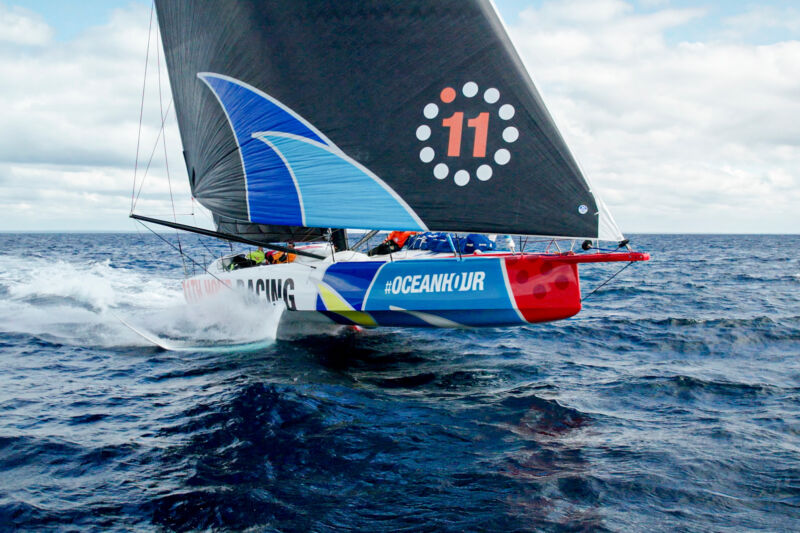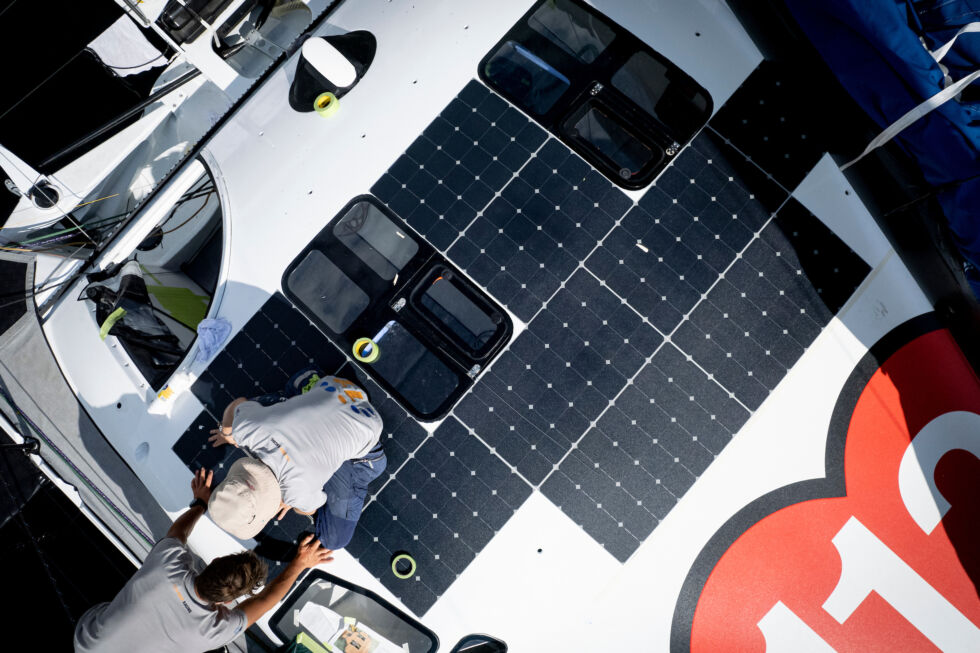
Just over a week ago, one of the world's most grueling races got underway from Spain. Eleven teams, including five International Monohull Open Class Association (IMOCA)-class racing yachts, departed Alicante in Spain for the first leg of a 32,000-nautical-mile (60,000-km) route that includes a 12,750-nautical-mile stretch between South Africa and Brazil through the Southern Ocean. The crews have little in the way of creature comforts beyond freeze-dried meals and a bucket for a bathroom. Along the way, the boats will collect scientific data on the state of our oceans, from dissolved gases like oxygen and carbon dioxide to microplastics.
IMOCA-class boats are 60 feet (18.3 m) long and feature a single hull made from carbon fiber. In addition to sails, the yachts have retractable foils that lift the hull out of the water above 18 knots (33 km/h) and allow a top speed of 35 knots (65 km/h) or more. Designers have some freedom with the hull and sail shape, but everyone has to use the same design of masts, booms, and static rigging.
Mālama is one such boat, and it's crewed by the 11th Hour Racing team. In addition to collecting data on climate change, the team worked to minimize the carbon impact of building the yacht itself, experimenting where allowed with lightweight, sustainable materials like balsa or composites made from flax. "I like to think of where can we use renewables that actually adds performance to the program," said Simon Fisher, navigator for the 11th Hour team.

"The renewable energy we use on board is a good example of that," Fisher explained, referring to Mālama's solar panels, which charge its 48 V battery and save a lot of weight versus the more traditional approach of a diesel generator and its required fuel. "That's a considerable weight saving, and we're always chasing everything down to the last gram," he said.
"If you come on board the boat and looked at a lot of the non-structural elements, things like engine covers, which traditionally would be made out of carbon, are now done in flax and bioresins and all that sort of stuff. And we've actually done that in the build process. We took the time to build some samples and compare weights and durability," Fisher said.
Much of that is detailed in 11th Hour's sustainable design and build report (PDF), which describes "the amount of detail that went into measuring absolutely everything," Fisher told Ars. "So every element that went into the boat—what it was made from, the energy use, where things are sourced from, all of that—has been incredibly well-documented." As such, the team hopes the data can be useful to the rest of the industry.
-
Carbon fiber is very energy-intensive because it needs to be cured in an autoclave under heat and pressure.Amory Ross / 11th Hour Racing
-
Panels made using flax and power ribs, alternative boat building materials.Amory Ross / 11th Hour Racing
The IMOCA rules require boat-builders to use energy-intensive carbon fiber as the main material thanks to its high strength and light weight. But here and there, 11th Hour found ways to reduce its carbon impact. Reusing carbon fiber molds, for example, saved more than 170 metric tons of CO2 from the boat's footprint. "There's been some really good and actually surprisingly simple lessons that came out of it. One of the biggest savings in carbon footprint we've made is that the whole boat was built on renewable energy. So the boatyard that the boat was built on was on a renewable energy tariff, and that's like half the carbon footprint," Fisher said.
reader comments
33